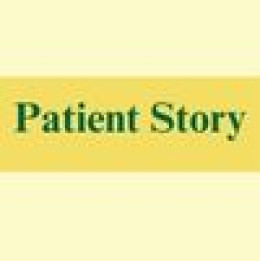Posted On: October 24, 2019 by Community HealthCare System in: Provider story
By Dr. David Cancelada: As I look back over my 30 years as a physician and surgeon, I am amazed at the advancements in medicine and science in the fight against cancer, particularly breast cancer. We are truly a blessed country with the best healthcare available on the planet. When I began my training back in the 1980s, breast cancer was one of many dreaded cancers that left women severely disabled, disfigured, and with little hope to live more than 5 to 10 years from the time of their diagnosis. Although breast cancer or any cancer is still a life-altering event and a reminder of our mortality, there is now hope for a long life that does not need to be filled with debilitating consequences.
The most important advancement in the treatment of breast cancer is early detection. Radiology imaging techniques, specifically mammography and ultrasound, now allow us to identify breast cancer at a very early stage, which means finding it before the cancer cells leave the breast. The quality of images has improved so much that cancers can now be identified when they are only millimeters in size – long before a cancer can be felt by the woman or doctor. It is solely for this reason that the survival rate for breast cancer and the options available for its treatment have improved significantly. However, it requires women to go and have their mammograms. This is a decision that the patient has to make, and no one else can do it for her.
I still meet and consult with many women who forgo having mammograms because they have an unjustified fear of radiation exposure, pain, or, paradoxically, finding something that they do not want to face. The radiation exposure of a mammogram is minimal, probably the equivalent of sunning on the beach on a summer afternoon. Yes, there can be some pain associated with mammography, but radiology has made many strides to try to minimize this, and most women find it only uncomfortable and not painful. And as far as finding something that is difficult to face, unfortunately, reality will not go away because one does not want to face it. Reality will win out, and if cancer is not detected sooner rather than later, the consequences of delay will be more radical treatment and decreased survival rate. One in nine women will experience breast cancer in their lifetimes, but the majority occur after the age of 50 years.
Women should discuss timing of mammograms with their primary care physicians. The American College of Obstetricians and Gynecologists recommends that for women at average risk of breast cancer, screening mammography be done every 1–2 years beginning at age 40. If you have not started screening in your 40s, you should start having mammography no later than age 50. Screening should continue until at least age 75 years. Mammograms are the only way to catch breast cancer early, which is when it is most treatable.
Another advancement is the role of surgery. Thirty years ago, the only thing that was offered women was removal of the entire breast as well as the majority of lymph nodes in the axilla, or armpit. This approach was not only disfiguring, but it also could affect the use of the arm since there was a risk of lymphedema, or swelling of the arm because of the removal of the lymph nodes. But now, many women can keep their breast with only removal of the immediate area around the cancer and the removal of only several lymph nodes for sampling rather than a majority. However, this is related to how advanced the cancer is, so again, early detection is critical.
Improvement in chemotherapy and radiation has been absolutely amazing, too. At the beginning of my training, I would care for breast cancer patients in the hospital because many of them suffered from the severe side-effects of chemotherapy. Now, almost all breast cancer treatments are done in an outpatient setting, and many women continue to work and live their lives as best they can during cancer treatments. Of course, there are still side effects of chemotherapy and radiation therapy, but the treatments are now so focused that the side effects are nothing like they used to be. The result is that most patients can complete their entire cancer treatment and can be cured of their cancer. As a result, many women can live their full life expectancy with a history of breast cancer and not have to die from it.
Finally, all of this treatment is readily available at many hospitals, even in rural Kansas. I currently provide general surgery services for Community HealthCare System (CHCS) in Onaga, Kansas. Despite being a small community hospital, CHCS provides state-of-the-art mammography, ultrasonography, and surgery. We have a great operating team that can provide breast-conserving surgery to include the sentinel lymph node (several only) biopsy of the axilla or armpit. If chemotherapy or radiation therapy is needed, this treatment will need to be done in dedicated cancer therapy centers in Manhattan or Topeka, but the detection and surgical options for breast cancer can be done close to home. In a hometown environment away from the hustle and bustle of a large city, women will not feel like they are simply a “number” in a large medical center.
Breast cancer cannot be prevented. One in nine women will experience it during their lifetime. But if faced with prudence, hope, and courage, it can be treated early, effectively, and with the expectation of a long life.










0 comments